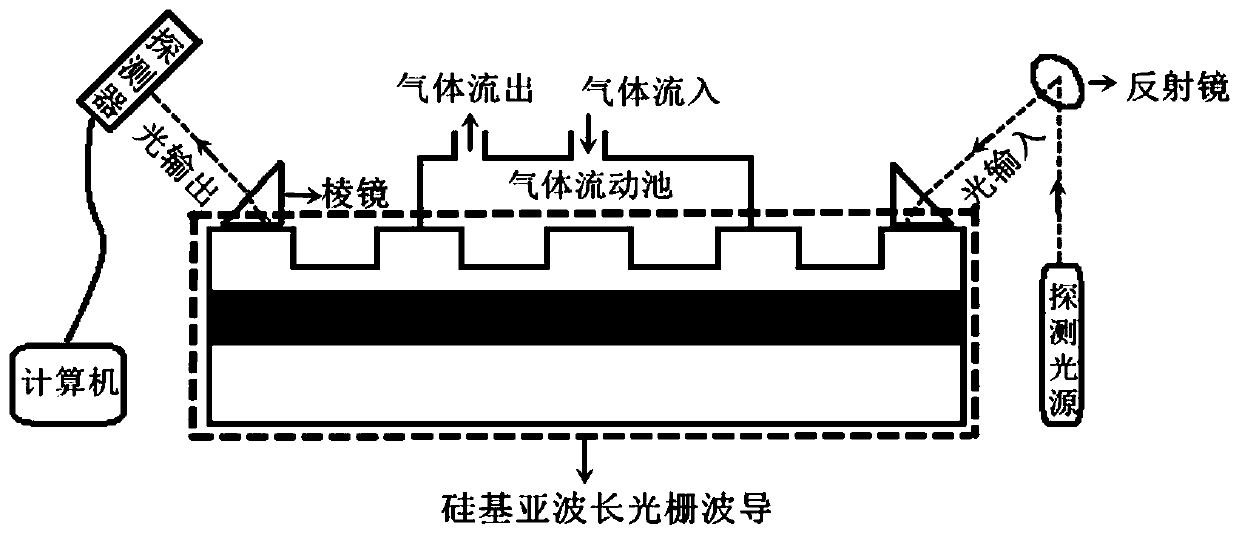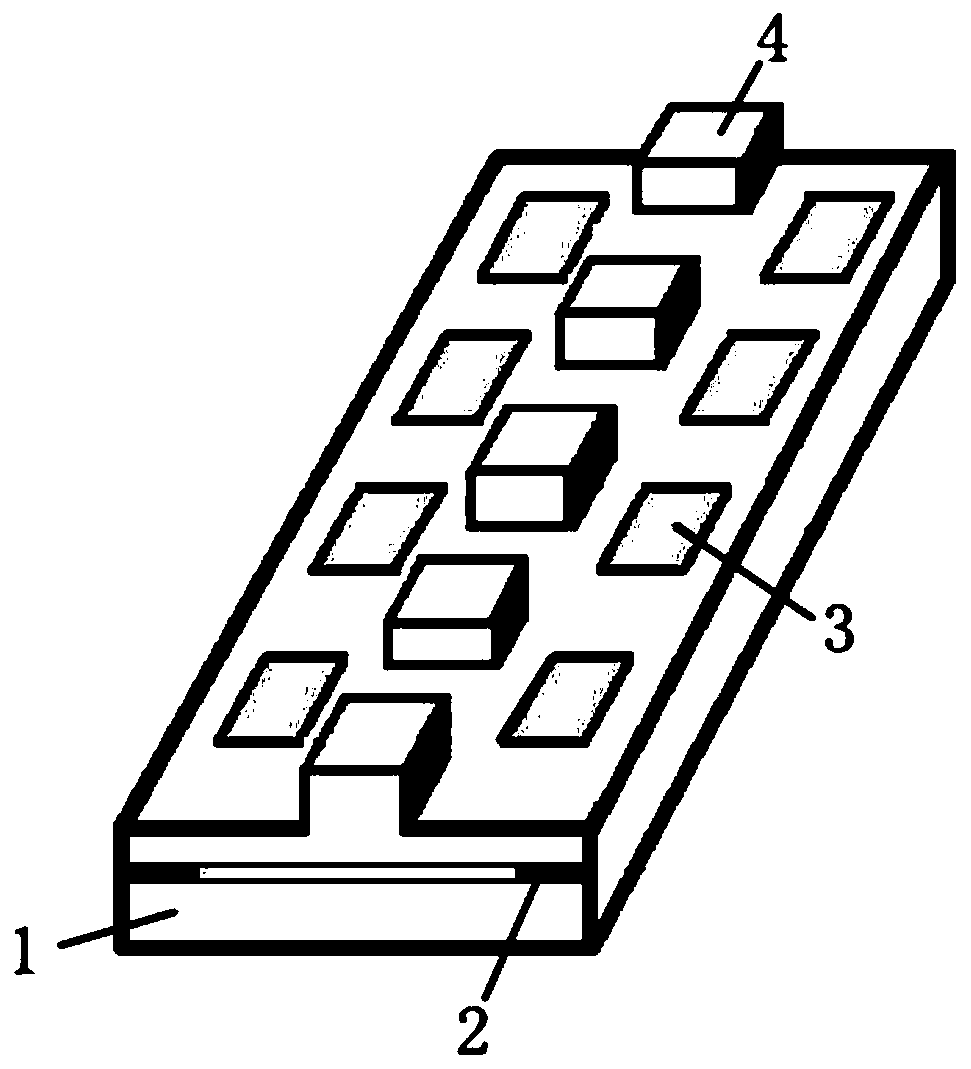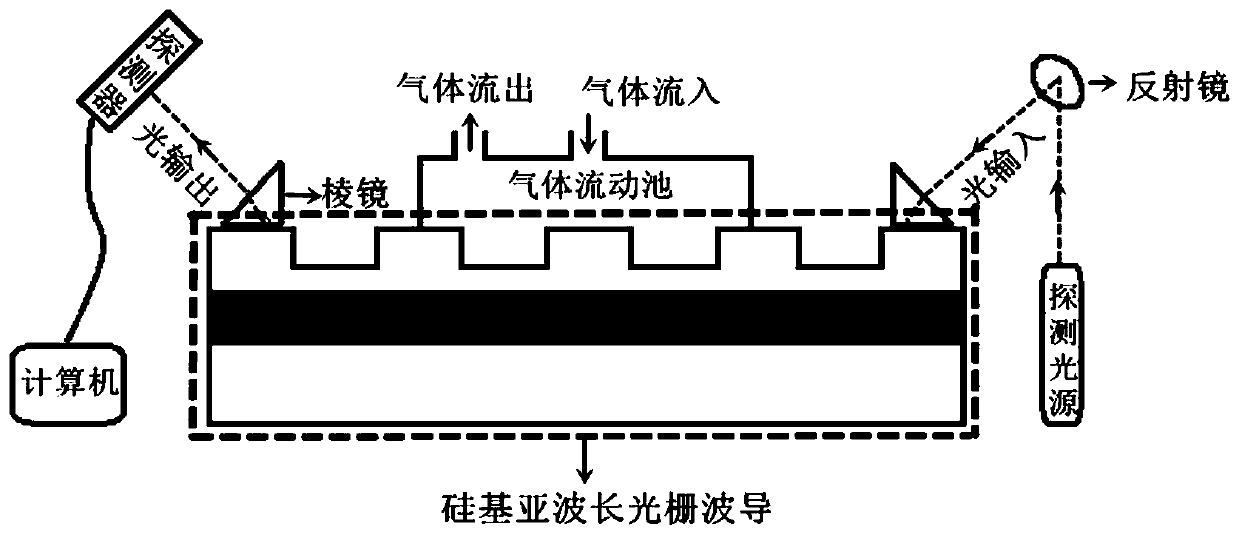Gas sensor based on silicon-based mid-infrared sub-wavelength grating waveguide
A sub-wavelength grating and gas sensor technology, which is applied in the field of sensor detection, can solve the problems of high energy consumption, long activation time, and inability to detect gas dynamics in gas sensors, and achieve high sensitivity, low cost, and fast response.
- Summary
- Abstract
- Description
- Claims
- Application Information
AI Technical Summary
Problems solved by technology
Method used
Image
Examples
Embodiment 1 2
[0042] Example 1 Carbon dioxide (CO 2 ) concentration detection
[0043] Carbon dioxide (C0 2 ) As the main component of greenhouse gases, it will not only cause the increase of ground temperature, climate anomalies, sea level rise and other greenhouse effect complications. C0 2 The molecule has an absorption peak at 4.26 μm, and the intensity of the mid-infrared absorption line is 4 to 5 orders of magnitude greater than that of the near-infrared. The mid-infrared quantum cascade laser is selected as the laser light source, and the wavelength coverage is mainly from 3.8 to 12 μm, which satisfies the C0 requirements well. 2 Strong absorption band around 4.26 μm. After the laser light source passes through the measured gas, the energy attenuation will occur at the corresponding spectral line, and the unabsorbed radiation is detected by the detector, and the measured gas concentration can be obtained by measuring the energy attenuation at the spectral line.
Embodiment 2
[0044] Example 2 Methane (CH 4 ) concentration detection
[0045] In the atmosphere, when the concentration of methane is below 5%, it can burn when encountering a fire source, but cannot explode. When the concentration of methane is about 5.3% to 15%, it will explode when it encounters a fire source, and when it is 9.5%, the explosion ability is the strongest. The main component of gas in mines is methane, accounting for about 83-89%. Mine gas is an important source of natural disasters in coal mines. Methane molecules have a strong absorption spectrum at 3.3-3.45 μm. After the mid-infrared laser passes through the measured gas, energy attenuation will occur at the corresponding spectral line. The unabsorbed radiation is detected by the detector. Through the measurement The attenuation of energy at the spectral line can be used to obtain the concentration of the gas to be measured.
[0046] As mentioned above, the mid-infrared sub-wavelength grating waveguide gas sensor of...
PUM
| Property | Measurement | Unit |
|---|---|---|
| size | aaaaa | aaaaa |
| thickness | aaaaa | aaaaa |
Abstract
Description
Claims
Application Information
 Login to View More
Login to View More - R&D
- Intellectual Property
- Life Sciences
- Materials
- Tech Scout
- Unparalleled Data Quality
- Higher Quality Content
- 60% Fewer Hallucinations
Browse by: Latest US Patents, China's latest patents, Technical Efficacy Thesaurus, Application Domain, Technology Topic, Popular Technical Reports.
© 2025 PatSnap. All rights reserved.Legal|Privacy policy|Modern Slavery Act Transparency Statement|Sitemap|About US| Contact US: help@patsnap.com



